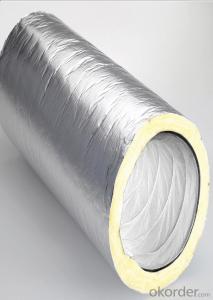Flexible Duct Pipe: When to Use and How to Install
Flexible duct pipes are a versatile and cost-effective solution for many HVAC applications. They are easy to install, can be bent around obstacles, and are less expensive than rigid ductwork. But when should you use them, and how do you install them properly? Let’s dive into the details and explore the world of flexible duct pipes with a touch of personality and emotion, making this guide both informative and engaging.
The Beauty of Flexibility: When to Use Flexible Duct Pipes
Flexible duct pipes are not just a practical choice; they are also a beautiful one. They offer a range of benefits that make them ideal for certain situations. Here are some scenarios where flexible duct pipes truly shine:
1. Space Constraints: If your home or office has tight spaces that rigid ductwork can’t navigate, flexible duct pipes can be the hero you need. They can bend and twist around obstacles with ease.
2. Budget-Friendly: On a budget? Flexible duct pipes are your friend. They are generally less expensive than their rigid counterparts, making them an attractive option for those looking to save a few bucks.
3. Quick Installation: Need to get that HVAC system up and running ASAP? Flexible duct pipes can be installed relatively quickly, which is perfect for time-sensitive projects.
4. Temporary Solutions: If you’re renting or in a temporary living situation, flexible duct pipes provide a quick and easy solution for your heating and cooling needs without the commitment of permanent ductwork.
5. Mobile Homes: For those living in mobile homes, flexible duct pipes are a go-to choice due to their ease of installation and removal, making them perfect for a lifestyle on the move.
The Art of Installation: A Step-by-Step Guide
Now that we know when to use flexible duct pipes, let’s get our hands dirty and learn how to install them. Here’s a step-by-step guide that’s as easy as pie:
1. Gather Your Tools and Materials: Before you start, make sure you have everything you need. This includes a flexible duct pipe, a duct cutter, a pair of gloves, a marker, and some tape measure.
2. Measure and Mark: Measure the distance between the registers and the unit, and mark the length of the duct pipe accordingly. Remember, it’s better to have a little extra than not enough.
3. Cut with Care: Using your duct cutter, carefully cut the duct pipe to the marked length. Be sure to follow the manufacturer’s instructions for the best results.
4. Connect to the Registers: Attach one end of the duct pipe to the register. Make sure it’s secure and properly sealed to prevent air leaks.
5. Route the Duct: Route the duct pipe through the space, making sure it’s as straight as possible and avoiding sharp bends that could restrict airflow.
6. Secure in Place: Use duct tape or clips to secure the duct pipe along its length. This will keep it in place and prevent it from sagging or moving around.
7. Check for Leaks: Once everything is connected and secured, it’s time to check for leaks. You can do this by running the HVAC system and feeling for air leaks along the duct pipe. If you find any, seal them up with more tape or mastic.
8. Test the System: Finally, test the HVAC system to ensure it’s working properly. Make sure the airflow is consistent and there are no unusual noises or temperatures.
The Emotional Side of Duct Installation
While the technical aspects of installing flexible duct pipes are important, there’s also an emotional side to consider. This project can be a labor of love, a way to make your living space more comfortable and energy-efficient. It’s about taking control of your environment and making it work for you.
The Personal Touch: Customizing Your Duct Installation
Every home and every project is unique, which means your duct installation doesn’t have to be one-size-fits-all. Here are some tips for adding a personal touch to your installation:
– Color Coding: Use different colors of duct tape for different rooms or zones to easily identify which duct goes where.
– Labeling: Write the room or zone on the duct pipe with a permanent marker to avoid confusion.
– Aesthetics: Choose a duct pipe color that complements your home’s decor or choose a patterned duct tape for a fun pop of personality.
– Green Considerations: Opt for eco-friendly materials and practices to reduce your environmental impact.
The Final Touch: Maintenance and Care
Once your flexible duct pipes are installed, it’s important to take care of them to ensure they last as long as possible. Here are some maintenance tips:
– Regular Inspections: Check the ducts for wear and tear, and replace them if necessary.
– Cleaning: Keep the ducts clean to maintain airflow and prevent the buildup of dust and allergens.
– Sealing: Regularly check and reseal any connections to prevent air leaks.
– Upgrading: If your flexible duct pipes are more than 10 years old, consider upgrading to a more energy-efficient system.
Conclusion
Flexible duct pipes are a fantastic option for a variety of situations, from budget constraints to space limitations. With the right installation techniques and a little personal flair, you can create an HVAC system that’s not only functional but also a reflection of your unique style and needs. Remember, the key to a successful duct installation is preparation, care, and a touch of personality. So go ahead, roll up your sleeves, and get ready to make your mark on your home’s comfort and efficiency.

